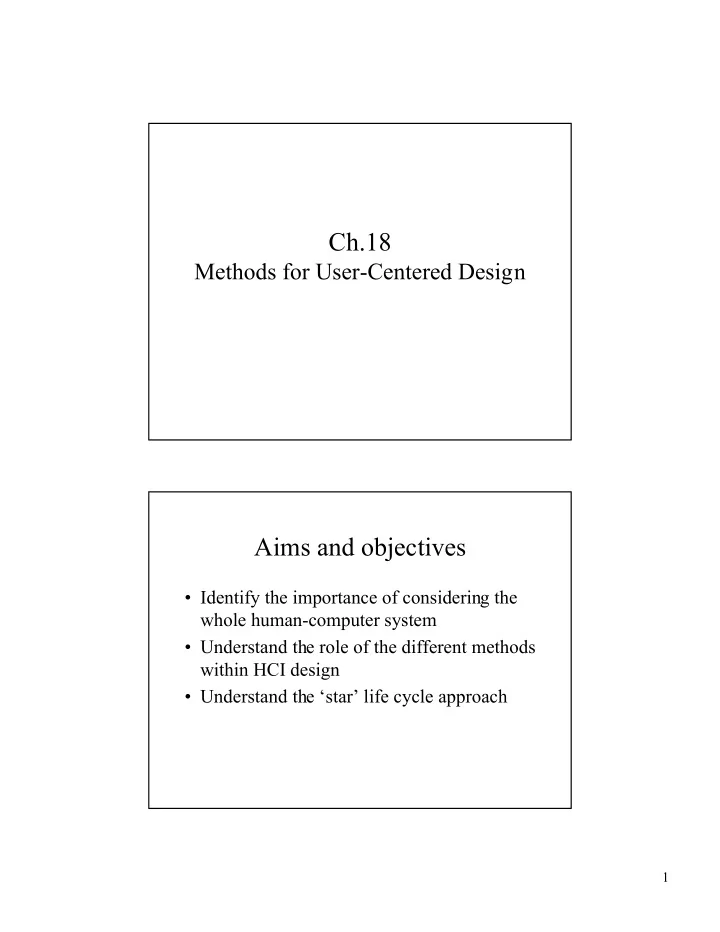

Ch.18 Methods for User-Centered Design Aims and objectives ¥ Identify the importance of considering the whole human-computer system ¥ Understand the role of the different methods within HCI design ¥ Understand the ÔstarÕ life cycle approach 1
Soft systems methodology(SSM) ¥ The essential aspect of understanding situations from a systems perspective is to consider the system as a whole. ¥ The emphasis of SSM is not on finding a solution to a specified problem, it is on understanding the situation in which a perceived problem is thought to lie. Stages of SSM ¥ Stage1-the problem situation ¥ Stage2-The problem situation expressed ¥ Stage3-Root definitions of relevant systems ¥ Stage4-Building conceptual models ¥ Stage5-Comparison of models and expressed problem situation ¥ Stage6-Feasible and desirable changes ¥ Stage7-Action to improve the situation 2
Cooperative design ¥ Participative design ¥ Sociotechnical design Open Systems Task Analysis(OSTA) ¥ The most significant of sociotechnical approaches to system design 3
Steps involved in OSTA ¥ Step1-The primary task of a work system is stated ¥ Step2-Task inputs are identified ¥ Step3-The external environment is established ¥ Step4-Transformation processes are described ¥ Step5-The social system is analysed ¥ Step6-The technical system is analysed ¥ Step7-Performanfce satisfaction is introduced. ¥ Step8-The requirements for the new technical system are derived from the task analysis Problems of OSTA ¥ The need for an expert to guide the design process and support user ¥ Level of integration with other system development processes and methods ¥ They can only be used if the organizational political climate is suitable ¥ sometime, cost effectiveness 4
Multiview: A user-centered methodology ¥ PTM-Primary task model ¥ FM-functional model ¥ PT-People tasks ¥ RS-Role sets ¥ CTR-Computer task requirements Strength and weakness of Multiview ¥ Strength-Ability to aid designers, ensuring that systems are developed carefully and logically ¥ Weakness-difficult to fit specific designs into a rigid framework 5
An HCI design approach(Star model) ¥ Evaluation is central in this model ¥ All aspects of system development are subject to constant evaluation by users and by experts ¥ Star model promotes an Òalternating waveÓ approach to system development Star model ¥ Enphasizes the important distinction between conceptual design and physical design ¥ Primarily oriented to the particular demands of developing interactive systems that will be usable by people. 6
Recommend
More recommend